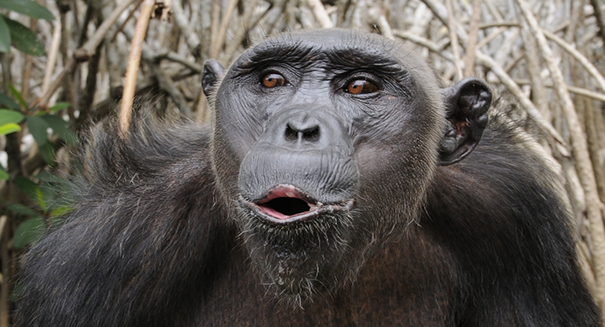
That chimpanzee you see in the zoo? It's endangered too, and it's all because of this one weird reason.
The United States has now declared that all chimpanzees are to be considered endangered, including those that are in captivity.
The decision by the U.S. Fish and Wildlife Service has made the ruling to better protect chimps in captivity, and will go into effect on September 14, according to a National Geographic report.
Wild chimpanzees have been listed as an endangered species since the U.S. Endangered Species Act passed back in 1990, but captive chimps have been separated from that distinction, meaning that they had fewer protections. About 1,724 captive chimps call the U.S. home, and about 730 of them are in labs.
The purpose of “split-listing” chimps in this way was to encourage captive breeding of chimps and reduce the incentive to take apes in the African wild.
But unfortunately, that’s not what happened. Instead, the listing encouraged people to treat chimps not has valued animals, but as commodities for sales and for research, and even entertainment. This, authorities believe, has undermined the conservation of wild chimps as well, according to the report.
There has been lots of deforestation, poaching and capture of apes for the pet trade, which has taken its toll on the wild chimp population. There were about a million chimps at the turn of the century, but those numbers have declined to between 172,000 and 300,000 today, according to the report.
Jane Goodall, the well-known primatologist, said at a press conference she thought the split-listing would be a good thing for HIV/AIDS research, but the recent decline suggests that it’s not working out quite as well as had been hoped.